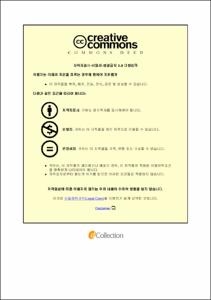방광기능장애 동물모델 구축 및 바이오이미징을 활용한 줄기세포 치료 전임상 연구
- Abstract
- Chapter 1. Improved efficacy and in vivo cellular properties of human embryonic stem cell derivative in a preclinical model of bladder pain syndrome.
Interstitial cystitis/bladder pain syndrome (IC/BPS) is an intractable disease with pelvic pain and frequent urination. IC/BPS has characteristic cystoscopy findings such as Hunner's ulcer. Also, it is characterized by severe bladder inflammation reaction and urothelium denudation. A promising approach to treat such IC/BPS is with mesenchymal stem cell (MSC) therapy. Currently, adult bone marrow (BM) thrapy is known as a method for treating IC/BPS, but there is a limitation of treatment. The effects of pluripotent stem cells (M-MSCs) derived from human embryonic stem cells (hESCs) were demonstrated by transplanting the characteristics of M-MSCs into living animals. Pure M-MSC showed characteristics of typical M-MSC behavior through controlled hESCs differentiation and isolation process. Induction hydrochloric IC/BPS animal model in infusion, bladder, mast cell infiltration, tissue fibrosis, apoptosis start urothelial exposure include functional and histological IC/bladder of BPS and built with superior efficacy compared to improve BM-MSC for improving urination of damage Irritability. Side effects such as abnormal proliferation, tumor formation, or immune-mediated transplant rejection have been observed over 12 months after injection. In vivo, confocal microscopy images have confirmed the persistence of cells transplanted in living animals for more than 6 months. The injected M-MSCs are differentiated into different types of cells and gradually become a blood vessel-like structure. In this study, the treatment effect, long-term stability, biodistribution and cellular properties of hESC derivative in pre-clinical models of IC/BPS has demonstrated the improved effectiveness.
KEY WORDS: Interstitial cystitis/bladder pain syndrome; Multipotent stem cells; Human embryonic stem cells; Living animal confocal imaging.|Chapter 2. Development of reliable chronic bladder ischemia rat model for reproducing the detrusor underactivity
Purpose: To establish a reliable detrusor underactivity (DUA) rat model and to investigate the pathophysiology of chronic bladder ischemia (CBI) on voiding behavior and bladder function.
Methods: Adult male rats were divided into five groups. The arterial injury (AI) group underwent vascular endothelial damage (VED) of the iliac arteries (AI-10, 10 times of injury at each iliac artery; AI-20, 20 times; AI-30, 30 times) and received a 2% cholesterol diet. The sham group underwent sham operation and received a 2% cholesterol diet. The control group received a regular diet. After 8 weeks, all rats underwent 24-hour voiding pattern analysis and unanesthetized cystometrogram. Thereafter, bladder tissues and iliac arteries were processed for organ bath investigation, immunohistochemistry staining, and gene expression analysis.
Results: The 24-hour voiding pattern analysis showed that in the AI-30 group, micturition interval was significantly increased (p <0.001), and number of voiding and voiding volume were significantly decreased (p <0.01 and p <0.001). Cystometrogram showed that the frequency of voiding contractions and micturition pressure were significantly lower in the AI-30 group (p <0.01). In the organ bath study, contractile responses to various stimuli were significantly lower in AI-20 and AI-30 group (all p <0.001). Histological study showed that in the AI-20 and AI-30 group atherosclerotic occlusion in the iliac arteries, followed by tissue inflammation, fibrosis, denervation, and apoptosis of the bladder muscle tissue were prominently observed than in sham group. Genome-wide gene expression analysis revealed that genes related to IL-17 and HIF-1 signaling pathways including INF- receptor-1 and Cxcl2 were up-regulated in the CBI-induced DUA rat model.
Conclusions: A rat model of progressive VED without any of artificial enhancers successfully induced the DUA, depending on severity of ischemia injury. Oxidative stress from progressive VED followed by tissue inflammation, fibrosis, denervation, and apoptosis of the bladder muscle tissue can be the possible explanation for the CBI-induced DUA.
KEY WORDS: Animal model; detrusor underactivity; Arterial Injury; Chronic Bladder Ischemia
- Issued Date
- 2018
- Awarded Date
- 2019-02
- Type
- Dissertation
- Alternative Author(s)
- HwanYeul Yu
- Affiliation
- 울산대학교
- Department
- 일반대학원 의학과
- Degree
- Doctor
- Publisher
- 울산대학교 일반대학원 의학과
- Language
- kor
- Rights
- 울산대학교 논문은 저작권에 의해 보호받습니다.
- Appears in Collections:
- Medicine > 2. Theses (Ph.D)
- 파일 목록
-
-
Download
 200000177615.pdf
기타 데이터 / 5.08 MB / Adobe PDF
200000177615.pdf
기타 데이터 / 5.08 MB / Adobe PDF
-
Items in Repository are protected by copyright, with all rights reserved, unless otherwise indicated.